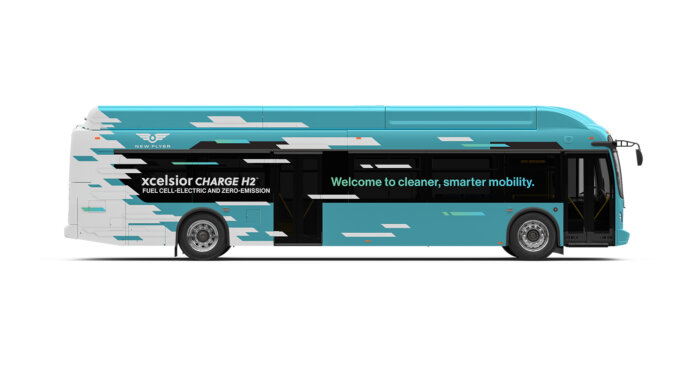A new project funded by the California Energy Commission (CEC) is demonstrating the value of bidirectional electric vehicle (EV) charging to support a vehicle-to-building (V2B) resilience hub.
The project will leverage stored energy from zero-emission electric buses, owned and operated by AC Transit, to provide filtered air conditioning at the West Oakland Branch of the Oakland Public Library for local residents in the event of unhealthy heat or smoke conditions.
CEC’s Electric Program Investment Charge program awarded the project $3.2 million in funding, with combined $400,000 in matching funds contributed by West Oakland Environmental Indicators Project (WOEIP) and AC Transit.
The pilot study is known locally as V2B Oakland and will be executed by a green energy project team: Center for Transportation and the Environment (CTE), The Mobility House, AC Transit, New Flyer, Schneider Electric, City of Oakland and WOEIP.
Each battery electric bus (BEB) will contribute six hours of backup power to the critical loads at the library, and each hydrogen fuel cell-electric bus (FCEB) will provide up to 11 continuous hours of backup power, displacing nearly 100 pounds of carbon emissions per hour compared to traditional diesel backup generators.
Working in close coordination with bus manufacturer New Flyer of America Inc., a subsidiary of NFI Group Inc., this project also marks the first time a U.S. transit agency will have the capability to use a hydrogen vehicle for V2B backup power.
“Initiating the first community resilience hub powered by a bidirectional V2B charging system has been an incredible journey. By bringing together leading-edge technological innovation and sustainability, we are able to offer much needed emergency response benefits for both transit agencies and communities,” says Jason Hanlin, director of technology research at CTE. “For a project with so many key players, we are excited to apply CTE’s proven project management approach to usher this novel project from concept to fruition.”
The resilient backup power system, which combines Bus Exportable Power Supply (BEPS) capability with bidirectional chargers and smart software, will be integrated and tested at NFI’s Hayward facility, then deployed at an AC Transit bus division and the Oakland Library. The system is designed to power the library’s upgraded HVAC and air filtration system, providing clean air and electricity inside the building to create a public shelter during emergencies and outages.
“We are thrilled to bring our ‘vehicle-to-everything’ expertise from numerous projects in Europe and Asia to now develop the first ever vehicle-to-building resilience hub in the U.S.,” states Gregor Hintler, The Mobility House’s U.S. managing director. “Our ChargePilot system ensures all transit mobility needs are met and orchestrates the charge and discharge of the bidirectional chargers so that the buses can power critical building loads.”
Electric-drive bus fleets are uniquely suited for backup power and emergency relief because of their energy storage capacity, electrical architecture, independent mobility and ability to be quickly dispatched. When compared to diesel generators – the current default technology for emergency backup power – BEPS provides quicker response times; avoids emission of harmful pollutants; can be more cost-effective; and increases the value of procuring zero-emission vehicles and chargers by providing community support benefits.
Infrastructure is expected to be installed by mid-2023, and demonstration, analysis, evaluation and knowledge transfer for the pilot program will continue until July 2025.





